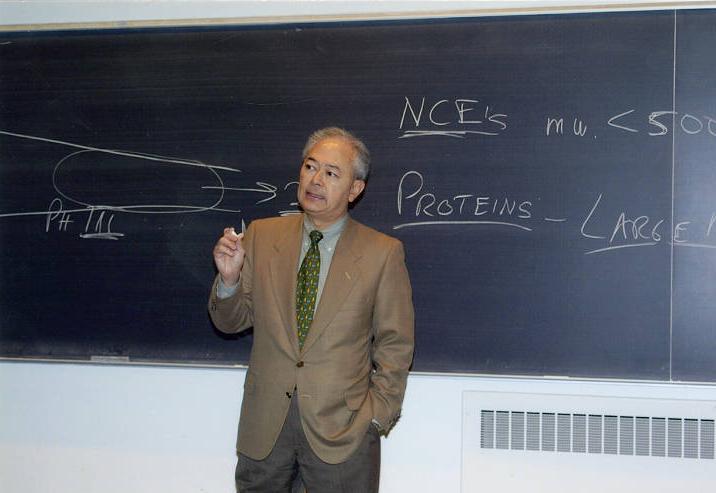
Photo info ...
Credit: Find A GraveView Source
(Aug. 17, 1941-June 9, 2009). Renowned physician, clinical investigator, and pharmaceutical executive, August (Gus) Watanabe was born in Portland, Oregon, at the time of World War II when anti-Japanese sentiments were high. His parents, Frank Hiroshi and Mary Yukiko Watanabe, were both born in the U.S. to immigrant Japanese parents. Even native-born American citizens of Japanese ancestry living along the West Coast were confined in internment camps beginning in April 1941. Watanabe’s father worked as a chicken sexer in a territory that took him through northern Indiana, northern Ohio, and southern Michigan. In February 1942, Watanabe’s mother brought him to Berne, Indiana, to join his father. Because they lived in Indiana, they were never interned.

Watanabe spent his childhood in Berne and graduated from Berne-French High School. He attended Wheaton College in Wheaton, Illinois, from which he graduated with a B.S. in Zoology in 1963. At Wheaton, he met his wife Margaret (Peggy) Reese.
Watanabe went to (IUSM), graduating with an M.D. in 1963. He also completed two years of residency in internal medicine at the school. In 1969, he moved to the National Institutes of Health to complete two years of military obligation. In 1971, he returned to IUSM to complete another year of residency after which he joined the faculty. He was board certified in Cardiology in 1973.

At 37 years of age, he became the youngest professor of internal medicine in the history of IUSM. In 1983, he became chairman of the department. In 1990, he left IUSM to work for . From 1996 to 2003, he served Lilly as the executive vice president of science and technology and as a member of its board of directors. During his tenure as director of research, Lilly launched 11 important new drugs. Watanabe was not only “known as an effective executive” but also someone whom “his friends and even his bosses turned to in difficult times… for his friendship and emotional support.” He also had a reputation as a mentor.
Watanabe played a key role in creating the Central Indiana Life Sciences Initiative, which became . After he retired from Lilly in 2003, he served as board chairman of Biocrossroads and Marcadia Biotech, a biotech startup company. He also served on the boards of several biopharmaceutical companies, including Endocyte, Ambrx, Quatrx, Kalypsys, and Frazier Healthcare Partners. He served on numerous committees for the American Heart Association and was a member of the American Society of Clinical Investigation, the Association of American Physicians, and Alpha Omega Alpha. He was a fellow of the American College of Cardiology and the American College of Physicians.

During his scientific career, Watanabe wrote or cowrote more than 100 papers and authored several book chapters, notable among them his section on cardiology in (2000). He was one of the pioneers in the study of myocardial (heart) cellular mechanics.
Watanabe also was very involved in the Indianapolis community serving on the boards of the Indiana University Foundation, Indianapolis Symphony Orchestra, and Christel House International.
He struggled with depression after the deaths of his father in March 2008 and his daughter, Nan Lewis, in May 2009, and took his own life.

Help improve this entry
Contribute information, offer corrections, suggest images.
You can also recommend new entries related to this topic.